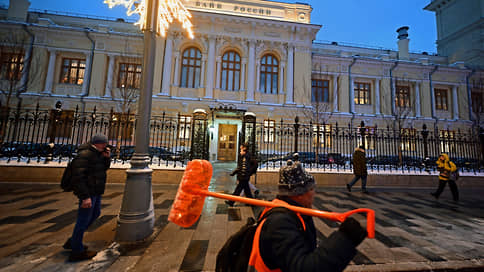When inflation reaches its peak
[ad_1]

Inflation in Russia will peak in the second quarter of the year. This forecast was made by Andrei Gangan, Deputy Director of the Monetary Policy Department of the Central Bank. According to him, this will happen due to the low base effect, since price growth slowed down in the spring of 2023. The current rates have passed their maximum, which was observed in the fall. The regulator’s representative added that the key rate of 16% makes it possible to effectively contain inflation. And in the next three years, the level of this rate will be approximately 10%, Andrei Gangan suggested.
What do such statements by the Central Bank mean? And what will peak inflation lead to? Oleg Buklemishev, director of the Center for Economic Policy Research at the Faculty of Economics of Moscow State University, answered these questions on Kommersant FM: “Much depends on the starting point – this is really low inflation, which was demonstrated last year. Therefore, the current rates are relatively low in annual terms. Inflation is slowly but decreasing.
At least the regulator has no reason to do anything with the key rate. Moreover, if we look at the current key rate, its values, and even compare it with this peak level of inflation, it turns out that this is a fantastic difference, it is, in fact, unprecedented in Russian recent history, in terms of the length of this period. We have been living with very high real stakes for quite some time now. This is the difference between key and current inflation. Prices are slowing down, they are not rising as they did, say, the previous fall.
The effect is already having an impact: people rushed to place deposits at 16%. It’s very nice to place money when you have 7% inflation. This is, in principle, a very good moment to start saving in the form of bank deposits, and many have actually taken advantage of this.”
In October 2023, the head of the Central Bank, Elvira Nabiullina, assumed that in 2024 inflation would peak in the spring. Meanwhile, the key rate in Russia has remained at 16% since December, and the annual rate of price growth accelerated to almost 7.7% in February. Against this background, the regulator’s forecasts to reduce the rate to 10% in the next three years look quite justified, says Evgeniy Nadorshin, chief economist of the consulting company PF-Capital. However, for economic development, according to him, lower indicators are necessary:
“The talk about the peak of inflation in the second quarter is more an attempt to send a signal to the market that there will be no prerequisites for a rate cut in the second quarter. As for the 3-year horizon and 10%, I must admit that already in 2025 I still expected below 10%. Having received the unpleasant experience of last year, in particular, the Central Bank will be careful, and we will no longer see rates at the level of ten years ago of about 4%; it is naive to expect this.
Another thing is that 10% seems to me somewhat excessive for the current reality. Sluggish growth rates have been slowing down along with consumer demand since last year, and the economy will not be able to comfortably digest the rate in a growth mode; it will need to be kept at lower levels in order to maintain this growth at least slightly above zero.”
First Deputy Director of the Central Bank’s Monetary Policy Department Andrei Gangan also said that the Russian economy will be less export-oriented due to maximum domestic demand. In addition, according to him, with the current high key rate there is no need to extend the decree on the mandatory sale of foreign currency earnings for companies.
Everything is clear with us – Telegram channel “Kommersant FM”.
[ad_2]
Source link






